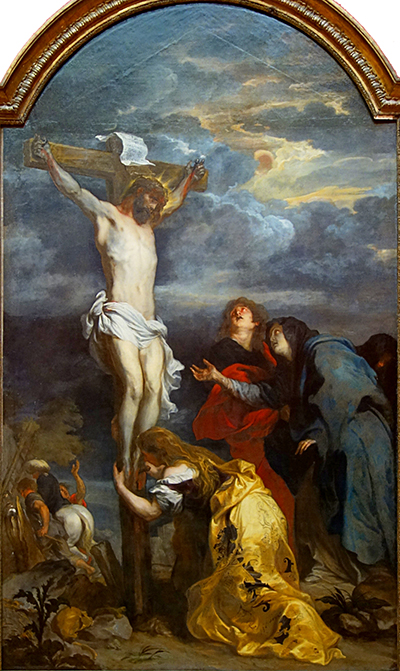The Crucifixion was completed by Anthony van Dyck in around 1630 and stands at an impressive 2.51m tall
This painting was a curved edge at the top because it was originally intended for a specific spot in the convent of Récollets in Lille, France. It was to be placed in the high altar, a tricky location to complete such a delicate and complicated painting.
The artist uses the colours of yellow, red and blue for the clothing in order to communicate the themes of eternal light, the passion and the position of humanity. The purpose of Christ's pain was as a sacrifice to the rest of us, for which we should be eternally grateful.
Anthony van Dyck would have been 31 years of age when he completed this painting, just entering the last decade of his career. It was at this point that he had completed significant training from several experiences teachers and had also travelled extensively across Europe in search of new influences.
The artist was most famous for single portraits and these religious scenes were far less frequent. In some cases he would be tasked with the challenge of merging reality with the divine, something his major donor Charles I would request. The monarch would often wish to be portrayed in a similar way to the religious characters that you find within this painting here.
The crucifixion has long since held particular interest and inspiration for artists across the religious world, with many making their own depictions of it at some point in their career. Religious themes dominated throughout the Renaissance and Baroque periods, with this particular theme being seen as one of the most emotional and instantly recognisable.
Raphael, Diego Velazquez and Caravaggio would all produce their own paintings along this theme, although the latter's was actually the Crucifixion of St Peter. Giovanni Bellini, Jan van Eyck and Peter Paul Rubens would also all tackle this topic with large scale paintings.




